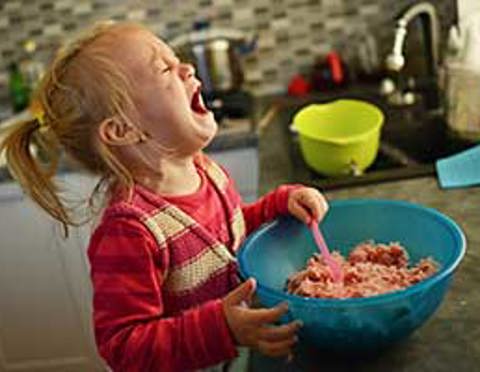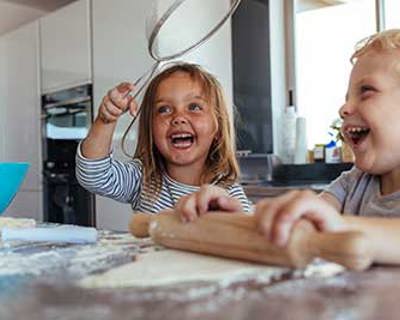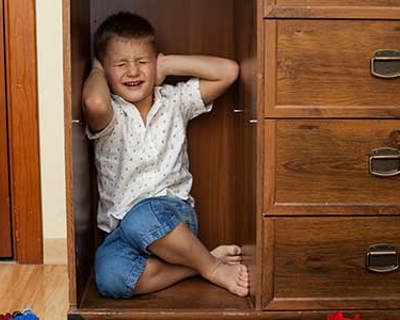'Terrible twos'. 'Three-nagers'. All parents will have been warned about the spectacular tantrums that can be thrown by pre-school children. But why do they happen?
The brain of a toddler is bursting with activity. But all this activity happens in a brain which is not yet ready to make sense of it. As babies become toddlers – as well as learning language and getting on their feet – their brains start to gain the complex social and emotional skills they will need to form relationships with other children and new adults.
Toddlers can't control their feelings
At first, toddlers can’t control or make sense of their own feelings and thoughts. They need an adult to do that for them – a kind, loving adult who is interested in their world.
Living with a toddler’s brain can feel chaotic as you help them to understand their emotions. Their behaviour reflects how they feel inside:

- Toddlers can be confusing BECAUSE they feel confused.
- They can be frustrating BECAUSE they feel frustrated.
- They can even be frightening BECAUSE they feel frightened.
- Just as importantly, they are also delightful BECAUSE they feel such delight in living.
- And they are very lovable BECAUSE they love you so much.
What causes tantrums?
Tantrums can appear to come out of nowhere, but there’s usually a reason why the storm clouds have built up in your toddler’s mind.
Parents know their children best, and usually have good instincts about what’s upsetting their child. The common reasons behind tantrums are usually about a toddler’s needs – whether physical or emotional. This might be:
- tiredness and/or hunger
- overwhelming feelings, frustration, disappointment
- a need for attention and stimulation
- picking up on a parent’s mood and stress
- something or someone that scares or alarms them.
One way you can help your toddler to understand and manage their feelings is by showing them how you handle emotions as an adult using the Five to Thrive approach. Read the Five to Thrive tips here.
Tantrums are normal – and healthy!
While preventing tantrums in the first place is more peaceful all round, it’s not always realistic or even desirable.
Tantrums and emotional outbursts are completely normal for toddlers. They are a signal that their brain has become overwhelmed, they are distressed and need something from the adults who care for them. Sometimes they are the only way for toddlers to express what they are feeling.
Just as storm clouds eventually have to release their energy before the air can clear, sometimes toddlers just need to let it all out!
How adults react in those moments helps toddlers’ brains to make connections and learn two important ideas:
- that expressing their feelings is ok
- that they will get help to cope with their feelings, and start to be able to do this themselves.

Tips and tactics for tackling tantrums
With tantrums, kindness works better than logic. Being upset about having to use a blue cup instead of the green one might not make much sense to your logical adult brain, but it can be a genuine source of disappointment for your toddler – especially if they’re at the h-angry side of hungry!
In the middle of an emotional storm, it’s even harder for young children to listen and understand facts and information. If your toddler is at this point, they need you to respond to their feelings, rather than their behaviour. In time this will help them to learn to regulate their own feelings. This is a really important part of their emotional development.
What can I do?
You could try:
- Use a calming, soothing tone of voice and words to recognise and explain their feelings. For example: “I know, you really wanted to stay in the playpark, didn’t you? It’s hard when it’s time to say goodbye.”
- Cuddle them. If they want to be hugged and are ready, soothing contact can be just what they need to calm themselves down. Sometimes toddlers will be clear that they don’t want cuddles. It’s important to stay with them, keep talking, and usually they’ll come round to wanting comfort.
- Try distraction. Often you can arouse their curiosity and interrupt their upset feelings by showing them something new and unexpected. It doesn’t work every time, but is often effective.
Avoiding power struggles
Dr Margot Sunderland makes a distinction between genuine distress tantrums and what she calls ‘Little Nero’ tantrums. These are about a power struggle where children are demanding to get their own way. They don’t usually involve crying and distress and the child has some control over their behaviour. Her advice is:
- Try to ignore them – the performance is likely to stop without a captive audience.
- Try not to give in to demands. It’s better to explain calmly and clearly why you’ve set a limit instead of rewarding the behaviour. Children thrive on routine and consistency, rather than getting their own way all the time.
- Try distraction and playfulness to invite your child to move on to something else, without having to feel they have ‘won’ or ‘lost’.
It’s important to be aware that ‘Little Nero’ tantrums can tip into real distress if children become overwhelmed. If you notice this, you may need to change approach and focus again on comforting and calming them down.
Keeping your cool
Often parents feel their own emotional buttons being pushed in the heat of the moment, and it can be hard not to snap or react with anger, especially when you’ve had a trying day of toddler tantrums.
You can read some tips here about ways to keep calm when dealing with children’s behaviour.



